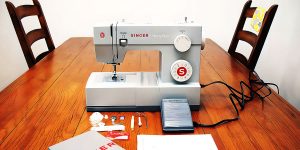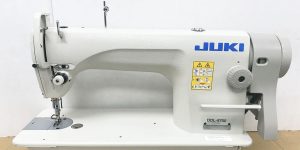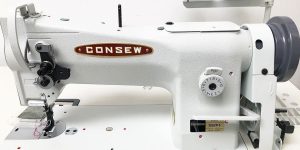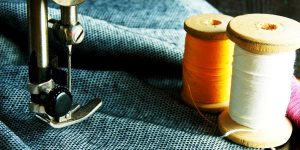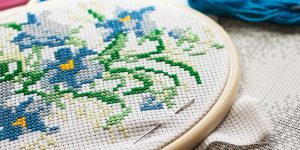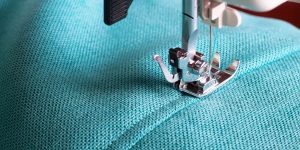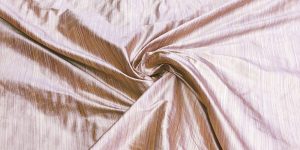Double stitch sewing, a versatile and time-honored needlecraft technique, has played a vital role in the art of textile creation for centuries. This method involves fashioning two parallel lines of stitches, bestowing augmented endurance and resilience to the seams. Rooted in handcrafting traditions, this sewing technique has evolved into an indispensable practice across various industries, encompassing fashion design, upholstery, and even automotive manufacturing.
In this article, I will cover why this technique remains invaluable to current sewing endeavors.
What is double stitch sewing?
Double stitch sewing, also known as twin stitching, is a technique that involves creating two parallel rows of needlework to join fabric pieces together securely. When comparing single vs. double stitch techniques, the latter technique provides enhanced durability and strength, making it a valuable technique in various creative endeavors.
Here are some benefits of a double stitch in sewing:
- Improved Durability. This method of needlework significantly enhances the longevity of your creations. The additional layer of reinforcement makes the fabric more resistant to wear and tear, ensuring that your projects withstand frequent use and maintain their integrity over time.
- Enhanced Strength. It offers increased strength, particularly in areas that experience high stress or tension. Whether you’re sewing heavy-duty denim jeans or constructing sturdy upholstery, this technique provides the extra stability needed to prevent seams from coming apart under pressure.
- Unraveling Prevention. One of the major advantages of the dual-thread technique is its ability to prevent unraveling. Should one thread break or become damaged, the second row of stitches acts as a safeguard, keeping the fabric intact.
- Professional Finish. Double-stitch sewing adds a touch of professionalism to your projects. It helps create a neat and visually appealing appearance, elevating the overall aesthetic value of your handmade items.
By employing a double stitch in sewing, you not only increase the durability and strength of your creations but also add a refined touch to your finished pieces. The technique’s ability to prevent unraveling and provide robustness makes it an ideal choice for various sewing projects.
Types of double stitch sewing
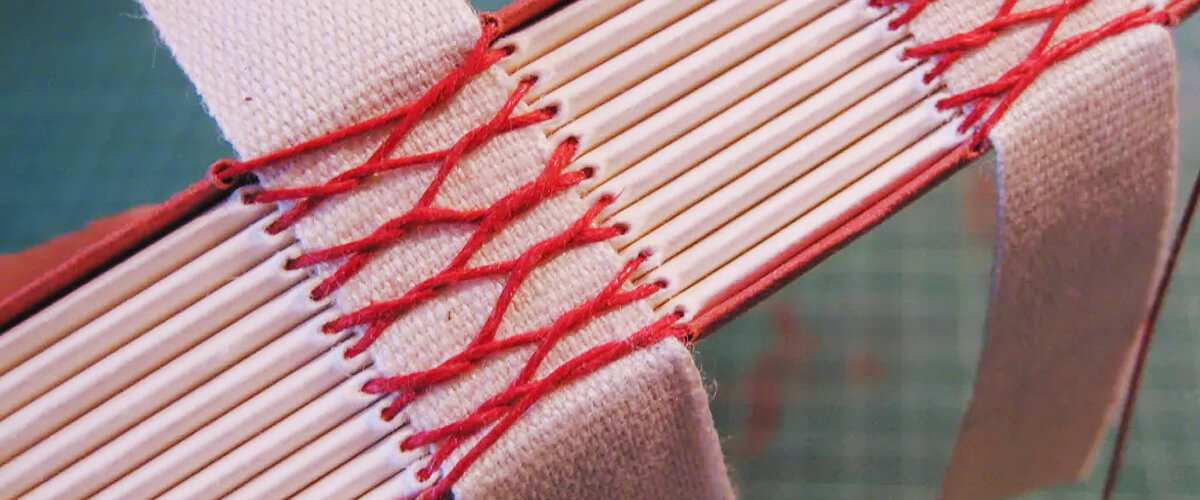
When it comes to the dual-thread technique, there are various techniques one can employ to achieve secure and durable seams.
| Technique | Description | Common Applications |
|---|---|---|
| Regular | Sewing two parallel lines of stitches, evenly spaced apart, to provide excellent reinforcement. | General sewing projects |
| Flat | Placing the two rows of stitches very close together creates a flatter seam with reduced bulk. | Lightweight or delicate fabrics |
| French | Wrapping the thread around fabric edges to secure and add a decorative finish, often used in hemming. | Hemming, finishing raw edges, decorative |
Now, let me tell you more about the varieties of this sewing method and their unique features:
- Regular. This is the most commonly used approach. To do a double stitch, simply sew two parallel lines evenly spaced apart. This technique provides excellent reinforcement and is suitable for a wide range of sewing projects.
- Flat. The flat variation involves placing the two rows of stitches very close together, almost touching. This creates a flatter seam, reducing bulk and providing a smoother finish. It is particularly useful when working with lightweight or delicate fabrics.
- French. The French technique, also known as the double overcast, requires wrapping the thread around the fabric edges to secure and add a decorative finish. It is commonly used in hemming and finishing raw edges, lending elegance and sophistication to your sewing projects.
Each dual-thread technique has its own characteristics and applications. Depending on the fabric, project, or desired outcome, you can choose the most suitable method to achieve your desired results.
So, when you embark on your next sewing project, feel free to experiment with these different techniques to enhance the strength and aesthetics of your seams.
How to create double stitch sewing?
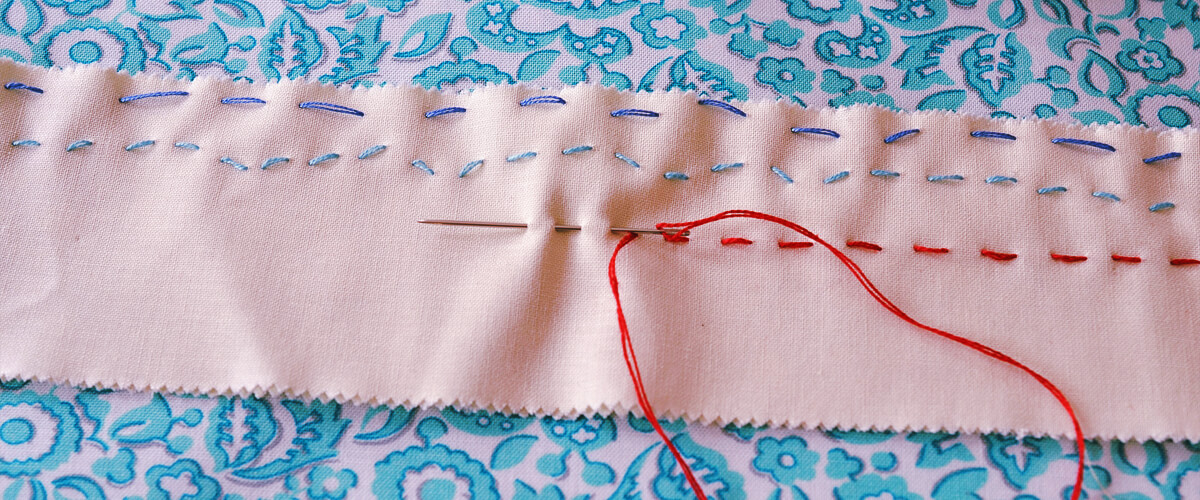
If you want to achieve secure and durable seams in your projects, double-stitch sewing is an excellent technique to master. You can create strong and professional-looking seams with the right techniques and tools.
Here’s a step-by-step guide on how to do double-stitch sewing:
- Prepare your materials. Gather the fabric pieces you want to join, suitable thread, and a sewing machine or needle for hand sewing.
- Choose the technique. Decide on the specific double-stitched seam method you want to use, such as regular double/flat/French.
- Set up your sewing machine or needle. If using a sewing machine, ensure you have the appropriate needle and thread tension settings for your fabric. If sewing by hand, thread your needle and knot the end of the thread.
- Align the fabric pieces. Place the fabric pieces you wish to join together, aligning the edges evenly.
- Start stitching. Begin by creating your first row of stitches. Make sure to maintain parallel lines and consistent spacing.
- Double the stitches. Once the first row is complete, go over it again to create the second row of stitches parallel to the first one. This second row provides added strength and durability to the seam.
- Secure and finish. Knot or backstitch the ends of the threads. Trim any excess thread and press the seam with an iron for a crisp finish if desired.
Remember, the key to successful sewing is practicing good technique and using suitable tools. Take your time and ensure your stitches are even and parallel. With practice, you’ll be able to create strong and professional seams that will withstand the test of time.
Where to use double stitch sewing?
Double-stitch sewing is a versatile technique that finds applications in fashion and home decor. Let’s explore various ways to incorporate double-stitch sewing into your projects, allowing you to create unique styles and designs.
- Clothing. Two-line needlecraft can be used to reinforce seams in garments, ensuring they withstand regular wear and tear. It is particularly useful for high-stress areas like pockets, waistbands, and hems.
- Accessories. From bags to belts, double-stitch sewing adds durability and visual interest to accessories. It helps secure layers of fabric or reinforce straps and handles.
- Home Decor. This sewing technique is beneficial for creating sturdy home decor items. Whether you’re making curtains, pillows, or table linens, two-line needlecraft ensures longevity and strength.
- Quilting: Quilters often rely on the dual-thread technique as it provides the necessary reinforcement for the quilt’s structure and helps maintain its shape over time.
By using such sewing techniques, you can achieve both functional and visually appealing results.
Common mistakes to avoid

It’s important to be mindful of common mistakes that can affect the quality and durability of your seams. By avoiding these pitfalls, you can achieve professional-looking results.
I’ve put together some common mistakes to watch out for and tips on how to avoid them:
- Using the wrong thread. Choosing the right thread is crucial for a strong double stitch. Using a thread that is too thin or weak can compromise the integrity of the seam. Opt for a sturdy thread suitable for your fabric type and weight.
- Improper tension. Incorrect tension settings can lead to uneven stitches and puckering. Adjust the tension of your sewing machine according to the fabric and technique you’re using.
- Skipping backstitching. Neglecting to backstitch or secure the beginning and end of your double stitches can cause them to unravel over time. Always remember to backstitch or knot the thread.
- Uneven spacing. Consistent spacing between the parallel rows of stitches is essential for a professional finish. Use a seam guide or marking tool to maintain even spacing throughout your double stitch.
- Ignoring proper needle selection. Different fabrics require different needle types and sizes. Using the wrong needle can result in skipped stitches, puckering, or damage to the fabric. Select the appropriate needle for your fabric to ensure smooth and accurate two-line needlecraft.
- Rushing the process. Double stitching requires patience and attention to detail. Rushing through the process can lead to careless mistakes and compromised seam quality. Take your time, sew slowly, and focus on maintaining even, parallel stitches.
By being aware of these common mistakes and following the tips provided, you can avoid potential issues and achieve clean, sturdy, and professional seams.
FAQ
Can I use double-stitch sewing for delicate fabrics?
Yes, it can be used for delicate fabrics. Choose the right technique and adjust settings accordingly to ensure the best results without causing damage.
Can I use double-stitch sewing for stretchy fabrics?
Absolutely! The dual-thread technique can be used for stretchy fabrics as well. Select the appropriate technique and adjust the tension to maintain elasticity while providing reinforcement.
Is double-stitch sewing more difficult than regular sewing?
With practice and proper techniques, double-stitch sewing can be mastered just like any other sewing method. Take your time, use the right tools, and focus on achieving even and parallel stitches for successful results.

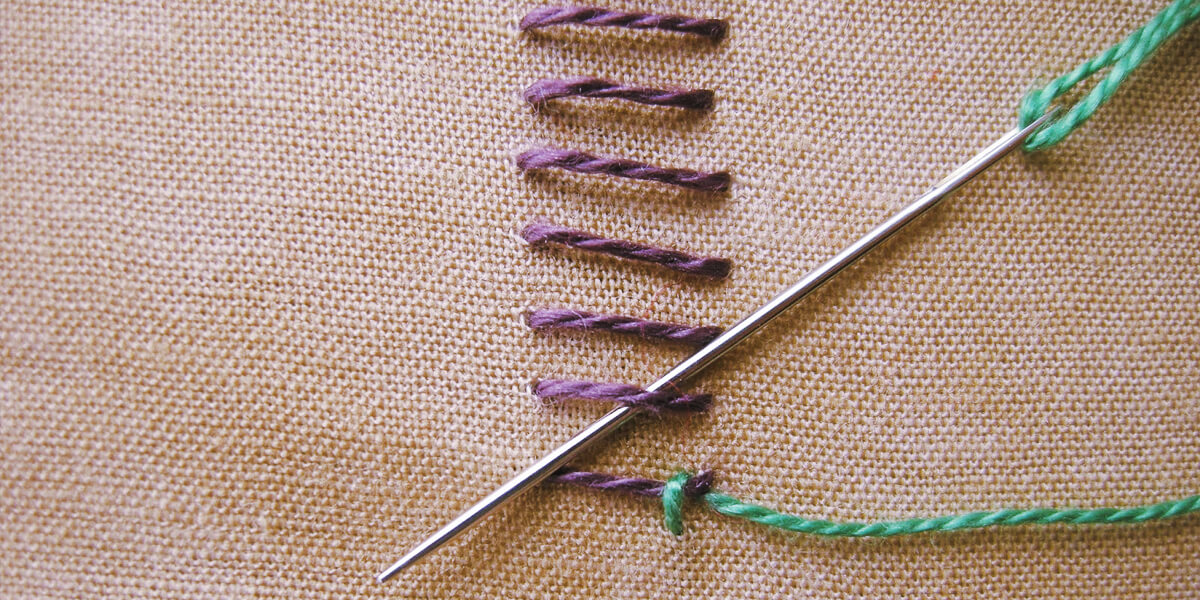
![The 4 Best Machines Under $500 [Budget Sewing Solutions]](https://www.favoritethings.net/wp-content/uploads/2024/03/best-sewing-machine-under-500-review-300x150.jpg)

![Best Sewing Machines for Upholstery [Crafting with Quality]](https://www.favoritethings.net/wp-content/uploads/2024/02/best-sewing-machine-for-upholstery-300x150.jpg)
